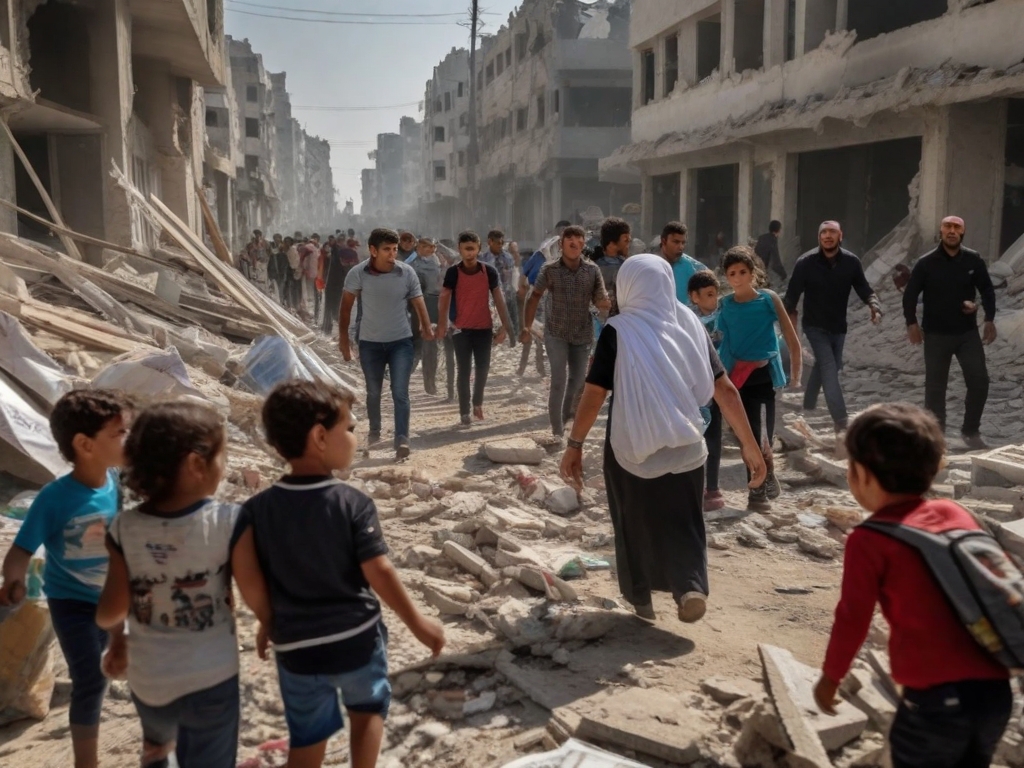Palestine
Israeli-Palestinian Conflict Between Attacks and Hope: Analysis – 1 –
- Introduction:
- Provide an overview of the conflict, including its historical beginnings and central issues.
- Historical Context:
- Explore the historical roots of the conflict, including territorial and religious claims, and the key events that shaped the current situation.
- Main Actors:
- Analyze the main actors involved in the conflict, such as the Israeli government, the Palestinian Authority, Hamas, and other militant and political groups.
- Regional Implications:
- Discuss the impact of the conflict on regional stability and relations between Israel, Palestine and their neighbors.
- International Interventions:
- Review the international community’s efforts to mediate the conflict and provide humanitarian aid.
- Humanitarian Consequences:
- Analyze the humanitarian impact of the conflict on civilians in Israel and the Palestinian territories.
- Future Perspectives:
- Explore possible solutions to the conflict and discuss steps toward a lasting peace.
1. Introduction
The Israeli-Palestinian Conflict represents one of the most enduring and contentious geopolitical issues of our time. Born out of territorial disagreement and the struggle for self-determination, it has seen a series of violent clashes, failed peace negotiations and a persistent lack of stability in the region. This article aims to explore the dynamics of the Israeli-Palestinian Conflict, analyzing the key events, the actors involved, and the ramifications of the persistent state of hostility, with the goal of outlining possible paths toward a peaceful and lasting resolution.
History of the Israeli-Palestinian Conflict.
The 1967 Occupation
On June 5, 1967, during the Six Day War, Israel occupied the rest of historic Palestine, including the Gaza Strip, the West Bank, East Jerusalem, the Syrian Golan Heights and the Egyptian Sinai Peninsula[1]. This event is considered a milestone in the Israeli-Palestinian Conflict, marking the beginning of a long military occupation that continues to this day.
The Nakba and the Subsequent Clashes.
Palestinians remember the creation of Israel as the Nakba, or catastrophe, which led to their dispossession and halted their dreams of statehood. In the Israeli-Palestinian Conflict that followed, some 700,000 Palestinians became refugees[2]. Armed clashes and tensions between Israel and the Palestinians have seen several spikes in violence over the years, as evidenced by the 22-day Israeli military offensive in Gaza launched on December 27, 2008, in response to Palestinian rocket attacks on the Israeli town of Sderot, which resulted in some 1,400 Palestinian and 13 Israeli deaths[3].
Regional Impact of the Israeli-Palestinian Conflict.
The Israeli-Palestinian Conflict has had a significant impact not only on the lives of Israeli and Palestinian citizens, but also on the politics and stability of the entire Middle East region. Conflicts and tensions between Israel and the Palestinians interact with other sources of tension and violence in the region, including chaos and collapse in Lebanon, civil war and state terrorism in Syria, instability in Jordan, and ethnic and sectarian tensions in Iraq[4].
2023 Escalation of the Israeli-Palestinian Conflict.
The most recent outbreak of violence in the October 2023 Israeli-Palestinian Conflict between Israel and Hamas represents the most significant escalation in several decades[5]. This new wave of violence saw Israel drop some 6,000 bombs on the Gaza Strip, nearly equaling the number of bombs used by the United States in Afghanistan in one year[6]. The Israeli-Palestinian Conflict continues to have not only regional but also global repercussions, fueling concerns about how it might affect the political stability of the Middle East[7].
Historical Context and Future of the Israeli-Palestinian Conflict.
Understanding the historical context is crucial for analyzing and interpreting the Israeli-Palestinian Conflict. Tensions between Israel and Palestine have been influenced by a number of historical factors, including the British Mandate in Palestine, which had its origins at the end of World War I and devastated the Middle East, setting the stage for future tensions. Through this study, it is hoped to provide a clear and balanced view of the Israeli-Palestinian Conflict.
2. Historical Context >>


